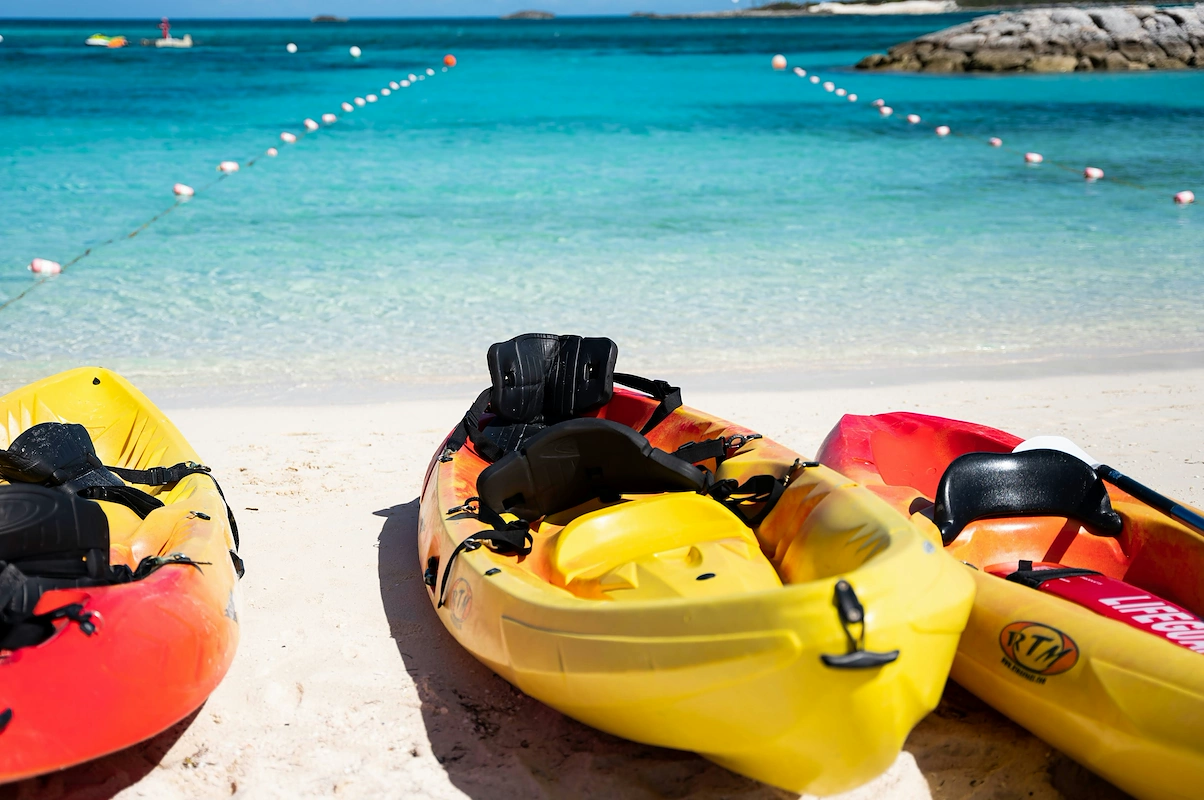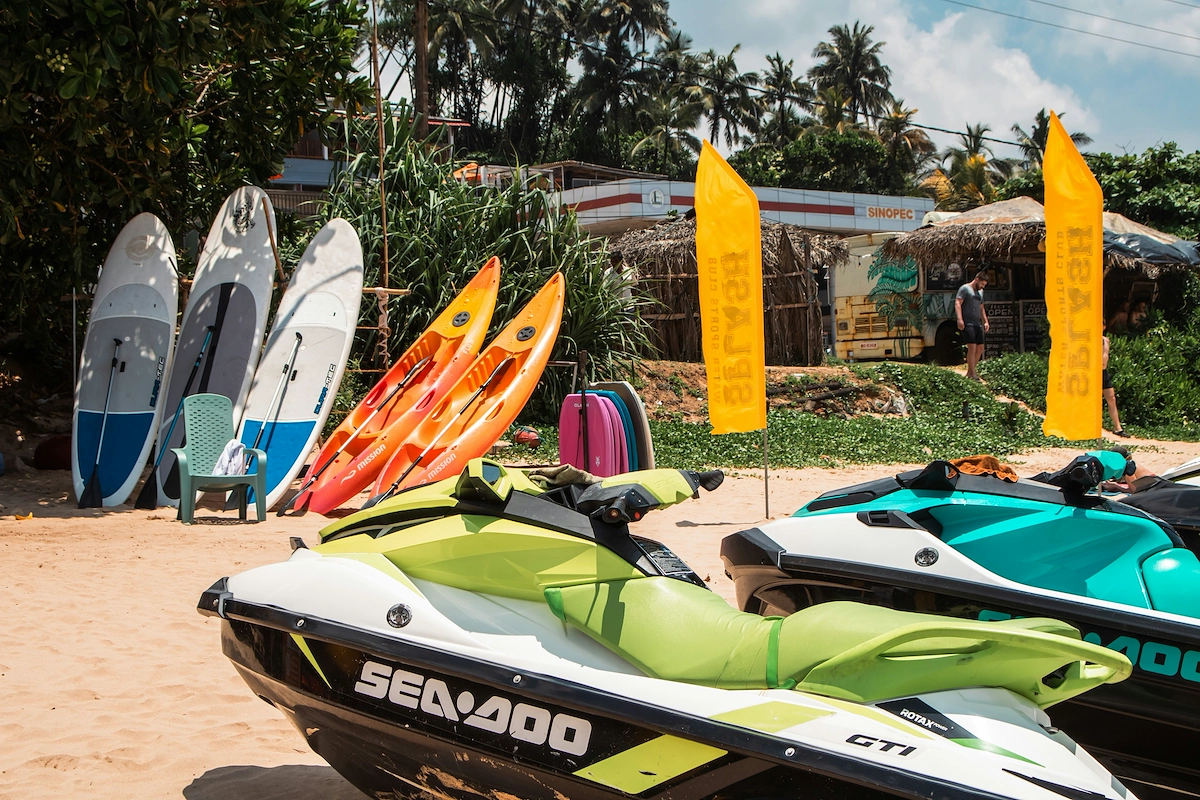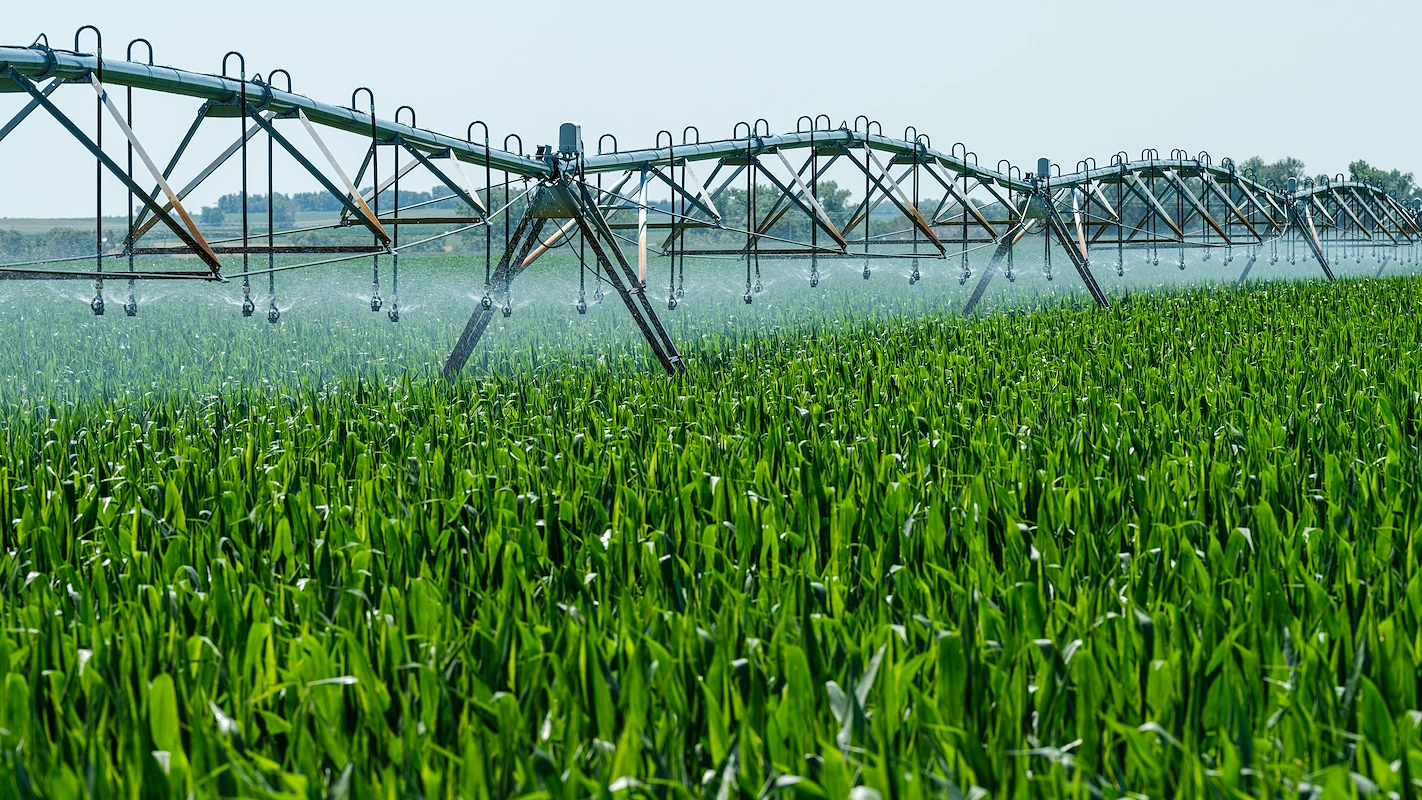Starting a glamping business is an exciting venture that blends a passion for the outdoors and hospitality with sharp business savvy. The global market is already worth billions of dollars, showing a strong demand for unique stays from couples on a getaway, families seeking adventure, and even corporate retreats.
This guide will take you through the practical steps of validating your business concept, selecting the right location, securing funding, and navigating permits to help you launch a successful glamping business in the U.S.
Step 1: Validate your business plan
First, understand your potential market. Look at local tourism data from your state's tourism board or the U.S. Travel Association. Also, check social media trends on Instagram and Pinterest for hashtags like #glampinglife to see what styles and experiences are popular right now.
Next, analyze your competition. A frequent misstep is to only look at other glamping sites. You should also review unique Airbnbs and boutique hotels in your area, since you share the same customer pool. Use AirDNA to see their occupancy rates and pricing strategies.
Startup cost breakdown
Speaking of planning, let's talk costs. A single glamping structure, like a yurt or safari tent, can range from $5,000 to over $50,000. Site development, including utilities and pathways, adds another $10,000 to $100,000 or more depending on the land's condition.
Furnishings and amenities will add $2,000 to $10,000 per unit. A small site with two units might require an initial investment of around $50,000, while larger projects can easily surpass $250,000. Careful financial planning is key from the start.
Here are 3 immediate steps to take:
- Research local tourism statistics on your state's official tourism website.
- Create a spreadsheet to compare rates and amenities of 3-5 local competitors you find on AirDNA or Glamping Hub.
- Draft a preliminary budget for one complete glamping unit, from the structure to the final furnishings.
Step 2: Secure your legal structure and licenses
You might want to consider forming a Limited Liability Company (LLC). This structure protects your personal assets if the business faces debt or lawsuits. It also allows for pass-through taxation, meaning profits are taxed on your personal return, which simplifies paperwork compared to a corporation.
Navigate permits and licenses
First, get a federal Employer Identification Number (EIN) from the IRS if you plan to hire staff. At the state level, you will need a business license and a seller’s permit to collect sales and lodging taxes from your state's department of revenue.
Many new owners get tripped up by local rules. Before you do anything else, contact your county’s Planning and Zoning Department. You will likely need a Conditional Use Permit, which can cost $500 to $2,000 and take three to six months to approve.
In addition, you will need building permits for each structure and a health department permit if you provide water or food. These can add another $200 to $2,000 per unit. Plan for these timelines and costs, as they can significantly influence your launch date.
Here are 3 immediate steps to take:
- File for an LLC with your Secretary of State’s office.
- Apply for a free Employer Identification Number (EIN) directly on the IRS website.
- Contact your local county planning department to inquire about zoning for “transient occupancy.”
Step 3: Protect your business with the right insurance
With the legal groundwork laid, you need to protect your assets. Insurance is a cost of doing business that you cannot afford to skip. Many new owners make the mistake of getting a generic policy, which often leaves dangerous gaps in coverage for a glamping operation.
Insurance coverage for your glamping site
General liability insurance is your first priority, covering guest injuries. You should look for policies with $1 million to $2 million in coverage. Property insurance will protect your tents, yurts, and furnishings from damage. A combined policy often has annual premiums from $2,500 to $7,500.
If you hire anyone, you will also need workers' compensation insurance. A commercial auto policy is necessary if you use a vehicle for business tasks, like transporting guests or supplies. These are separate from your main liability and property coverage.
You might want to contact an agent who understands outdoor hospitality. Consider providers like CBIZ, Glamping Insurance, or McGowan Program Administrators. They know the specific risks of this industry and can help you avoid policies that exclude activities common to glamping.
Manage unique glamping risks
Your business faces unique risks, from guest injuries around a fire pit to wildlife encounters or severe weather that damages a structure. You can manage these risks with clear guest safety rules, well-maintained equipment, and a solid emergency plan for fires or medical incidents.
Here are 3 immediate steps to take:
- Request quotes from at least two insurance providers that specialize in outdoor hospitality.
- Draft a guest waiver with an attorney to outline the inherent risks of staying on your property.
- Create a written emergency preparedness plan for fire, weather, and medical situations.
Step 4: Select your location and buy equipment
Your location is everything. Aim for at least half an acre per glamping unit to ensure guest privacy. When you contact the county planning department, ask about land zoned for “recreational” or “transient commercial” use. These classifications are often more favorable than standard residential or agricultural zones.
If you lease land, negotiate a long-term agreement of 5 to 10 years with renewal options. A frequent misstep is accepting a short-term lease, which puts your investment at risk. Make sure your contract explicitly permits the installation of utilities and semi-permanent structures.
Equip your glamping units
Now for the fun part. A quality bell tent from a supplier like Stout Tent can cost $1,000 to $3,000. A more robust safari tent or yurt from White Duck Outdoors or Rainier Outdoor will range from $5,000 to over $20,000. Most suppliers sell individual units.
Inside, plan for $2,000 to $5,000 per unit for a comfortable bed, seating, and basic amenities. Outside, a fire pit, chairs, and a small grill add another $500 to $1,500. These details are what guests remember and review.
Here are 3 immediate steps to take:
- Identify two potential land parcels and confirm their zoning classification with the county.
- Price out a complete equipment list for one unit from a supplier like Stout Tent.
- Draft key terms you need in a land lease, including length and utility access rights.
Step 5: Set up your payment processing
Most glamping sites require a 50% deposit at booking to secure the reservation. The remaining balance is often due 14 to 30 days before arrival. This policy protects your business from last-minute cancellations and confirms guest commitment early.
When you choose a payment processor, look for low transaction fees and fast fund access. Many new owners get caught by high monthly fees or long waits for bank transfers, which can hurt cash flow. Compare rates carefully before you commit.
Accepting payments
For payments on-site or on-the-go, JIM offers a streamlined solution. With JIM, you can accept debit, credit, and digital wallets directly through your smartphone. Just tap and you are done. Other providers often charge 2.5% to 3.5% plus monthly fees.
At just 1.99% per transaction with no hidden costs or extra hardware needed, it is particularly useful for selling add-ons like firewood or guided tours. The process is straightforward:
- Get Started: Download the JIM app for iOS.
- Make a Sale: Type the sales amount, hit sell, and ask your customer to tap their card or device on your phone.
- Access Funds: Your money is available right on your JIM card as soon as the sale is done, with no waiting for bank transfers.
Here are 3 immediate steps to take:
- Decide on your payment terms, including deposit percentage and final payment due date.
- Compare two payment processors, focusing on transaction fees and fund transfer times.
- Download the JIM app to see how it works for on-site sales.
Step 6: Fund your business and manage finances
The SBA 7(a) loan program is a popular choice. While it offers large sums, glamping projects often secure $50,000 to $500,000. Expect interest rates around Prime plus 2-3%. You will need a strong business plan and a credit score above 680 to qualify.
Also, look into local credit unions. They sometimes offer more flexible terms for small, community-based businesses than large national banks. If your site is in a rural area, the USDA's Rural Development loan programs are a fantastic resource that can result in better rates.
Plan your working capital
With funding in place, your focus shifts to day-to-day finances. You will need cash on hand for the first six months to cover marketing, utilities, and supplies. For a small site, plan for $15,000 to $30,000 in these operating funds before bookings become consistent.
Many new owners focus heavily on the big startup purchases and underestimate these initial operating costs. This can leave you short on cash for marketing or unexpected repairs right when momentum is most important. A detailed budget prevents this cash flow crunch.
Here are 4 immediate steps to take:
- Review the requirements for an SBA 7(a) loan on their official website.
- Contact a local credit union to discuss small business loan options.
- Check your property’s eligibility for USDA Rural Development programs.
- Create a six-month operating budget to determine your working capital needs.
Step 7: Hire your team and manage operations
Key roles and responsibilities
For a small site, you will likely be the main operator. As you grow, your first hire should be a Site Manager to handle guest check-ins and daily issues, typically earning $18-$25 per hour. First Aid and CPR certification is a valuable qualification for this role.
You will also need part-time cleaning staff at $15-$20 per hour. One cleaner can usually service 3-4 units per shift. Many new owners learn the hard way that an understaffed cleaning crew is a direct path to negative reviews, so plan accordingly.
Streamline your daily workflow
To manage your team, scheduling platforms like Homebase or Gusto handle shifts and payroll. For bookings and guest communication, a property management system (PMS) like Cloudbeds or ResNexus integrates everything. This helps you avoid double bookings and keeps operations smooth.
As a financial benchmark, aim to keep staffing costs at 20-25% of total revenue. This ratio helps you scale your team sustainably as your bookings increase, ensuring you hire when you can afford it without sacrificing service quality.
Here are 4 immediate steps to take:
- Draft job descriptions for a Site Manager and a part-time cleaner.
- Research local First Aid and CPR certification courses for your future staff.
- Compare the features of a PMS like Cloudbeds with a scheduling platform like Homebase.
- Calculate your target staffing budget based on 25% of your projected revenue.
Step 8: Market your site and attract guests
Create your direct booking channel
Your first marketing investment should be professional photography. Budget $500 to $1,500 for a shoot. Many new owners use phone photos, a mistake that directly costs them bookings. High-quality images are your most powerful sales asset.
With great photos in hand, build a simple website with a direct booking engine like Lodgify or Eviivo. This allows you to capture reservations without paying the 15-20% commission fees that online travel agencies (OTAs) charge for each booking.
Leverage listing sites and social media
To start, list your property on Glamping Hub, Airbnb, and Hipcamp. These platforms give you immediate access to a large audience. Use them to gain initial traction, but aim to convert those guests into future direct bookers on your own site.
On social media, Instagram and Pinterest are your best friends. Post stunning visuals consistently. You might want to run targeted Instagram ads to users interested in outdoor recreation in your area. A small budget of $15 per day can drive significant initial interest.
A good launch campaign could offer a 10% discount for the first 20 direct bookings to build momentum and gather reviews. Your target Customer Acquisition Cost (CAC) for these direct bookings should be under $50.
Here are 4 immediate steps to take:
- Schedule a professional photoshoot for your property.
- Create profiles on both Glamping Hub and Airbnb.
- Set up an Instagram business account and post your top five photos.
- Outline a launch promotion, such as a discount for your first 20 bookings.
Step 9: Set your pricing and manage bookings
Develop your pricing strategy
You might want to use dynamic pricing. This means you charge more for weekends and holidays. For example, a base rate of $175 per night could increase to $275 on a holiday weekend. This approach maximizes revenue during periods of high demand.
Use AirDNA and Glamping Hub to see what others charge. A frequent misstep is to simply match prices. Instead, you should analyze their occupancy rates to see if their price actually works. If a competitor is always booked, your similar unit might support a higher rate.
Aim for a gross profit margin of 60-70% on bookings. You can also boost revenue with add-ons like a s'mores kit for $25 or a guided hike for $50. These small extras often have very high margins and improve the guest experience.
Streamline your booking process
A property management system (PMS) like Cloudbeds or ResNexus is a game-changer. It syncs your calendars across Airbnb and your direct booking site. This helps you avoid the headache of double bookings as you get started.
You should also establish a clear cancellation policy. A common setup is a full refund if canceled 30 days prior, and a 50% refund for cancellations made 14-29 days before check-in. This policy protects your income from last-minute changes.
Here are 4 immediate steps to take:
- Analyze three competitors on AirDNA to establish your baseline nightly rate.
- Create a pricing calendar with separate rates for weekdays, weekends, and holidays.
- Draft a cancellation policy with specific refund tiers based on timing.
- Sign up for a free trial of a PMS like Cloudbeds to test its features.
Step 10: Maintain quality and scale your business
Measure your guest experience
Track guest satisfaction with a Net Promoter Score (NPS) survey sent after each stay; a score above 50 is a strong signal. You should also monitor your review scores on Airbnb and Glamping Hub, with a goal to maintain a 4.8-star average or higher.
These numbers reflect your operational success. Many owners see scores drop due to inconsistent cleaning. You can avoid this with a detailed, photo-based checklist for your team to follow during every turnover. This ensures every guest gets the same high-quality experience.
Plan your growth milestones
With quality locked in, you can plan for growth. Occupancy rate is your main guide. Once you sustain an 80% occupancy rate for a full peak season (around three months), it is a good time to add another unit to your property.
As you expand beyond four units, operations can become overwhelming for one person. This is the right time to hire a site manager. To manage tasks, a platform like Breezeway helps automate cleaning and maintenance schedules across multiple units and staff members.
Here are 4 immediate steps to take:
- Create a detailed cleaning checklist for one of your units.
- Set up a post-stay email to collect guest feedback for your NPS.
- Define the peak-season occupancy rate that will trigger your next expansion.
- Sign up for a demo of a property operations platform like Breezeway.
Your glamping business is more than just tents; it's about the memorable outdoor stays you create. The small details, like a comfortable bed or a private fire pit, are what truly define the experience. With careful planning, you are ready to build a successful retreat.
And when it comes to payments, keep it simple. JIM lets you accept cards right on your phone for a flat 1.99% fee, with no hardware needed. This makes it easy to handle bookings and on-site sales. Download JIM and you are set.















